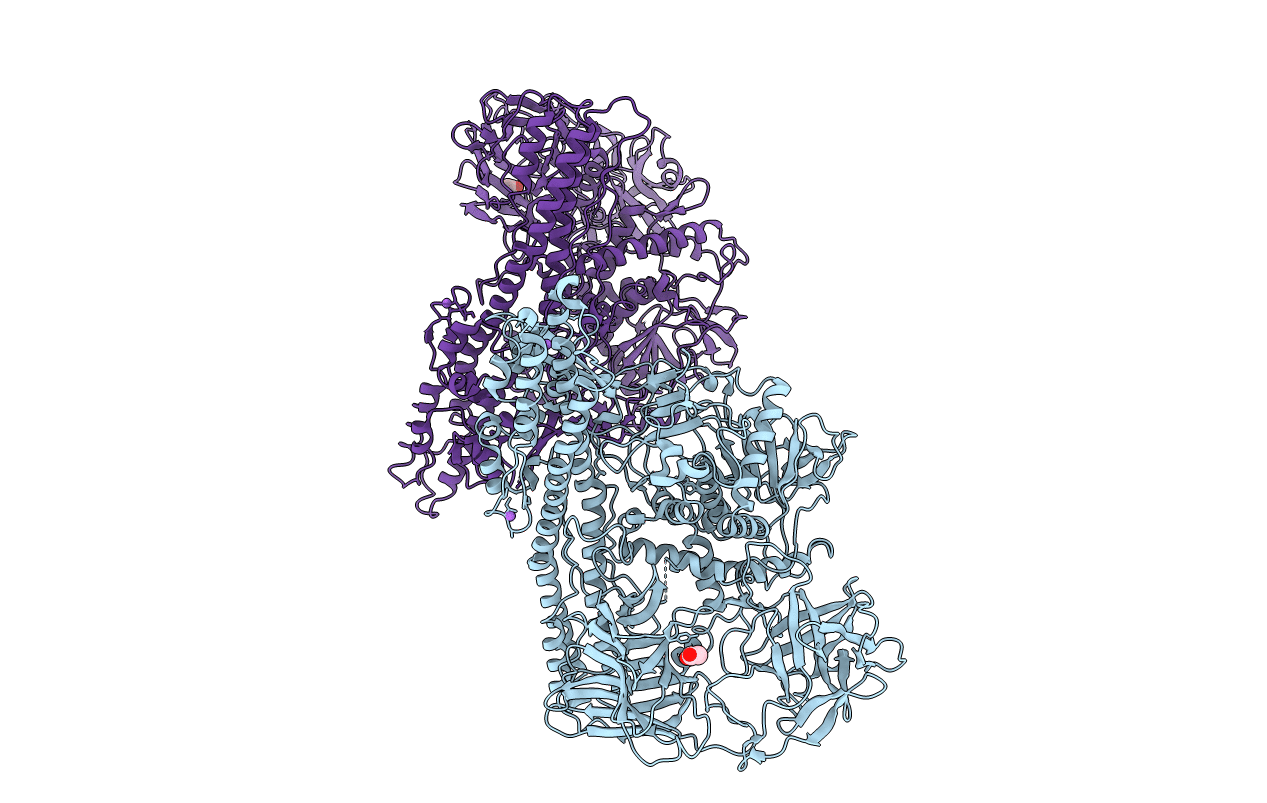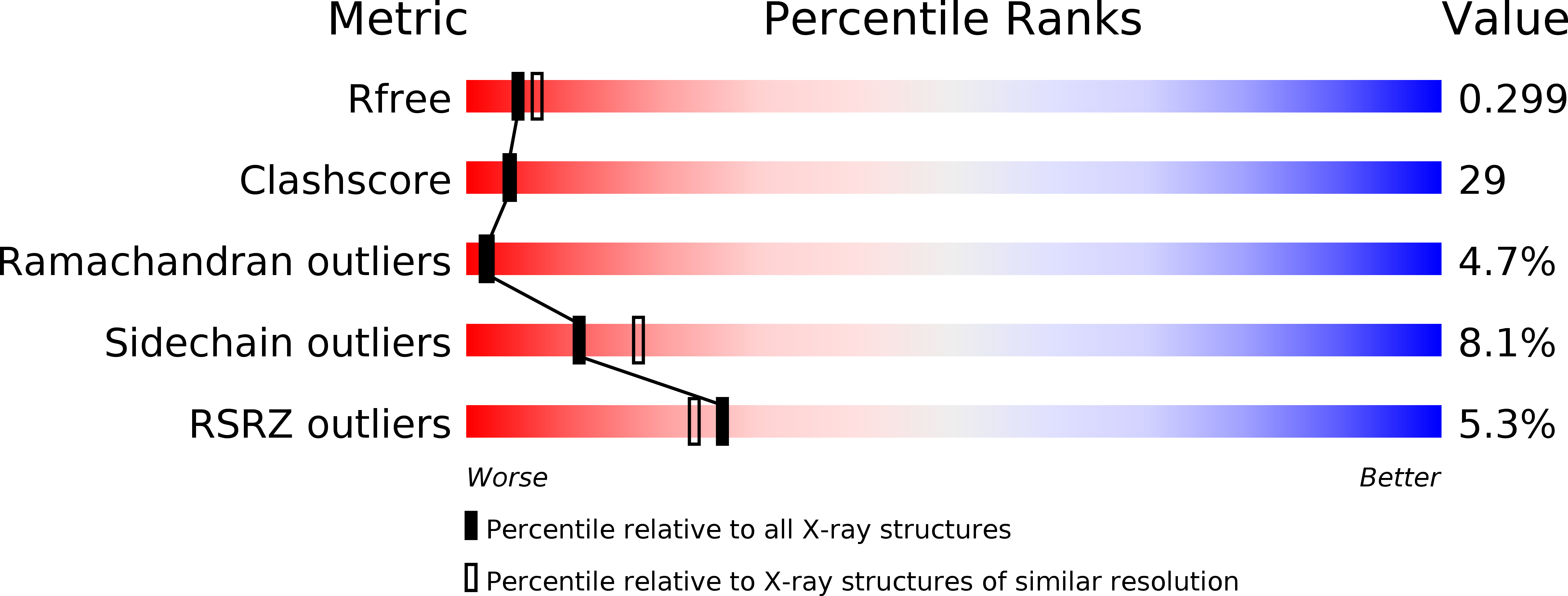
Deposition Date
2008-12-04
Release Date
2008-12-16
Last Version Date
2024-10-30
Entry Detail
PDB ID:
3FFZ
Keywords:
Title:
Domain organization in Clostridium butulinum neurotoxin type E is unique: Its implication in faster translocation
Biological Source:
Source Organism:
Clostridium botulinum (Taxon ID: 1491)
Method Details:
Experimental Method:
Resolution:
2.65 Å
R-Value Free:
0.30
R-Value Work:
0.25
R-Value Observed:
0.25
Space Group:
P 1 21 1


